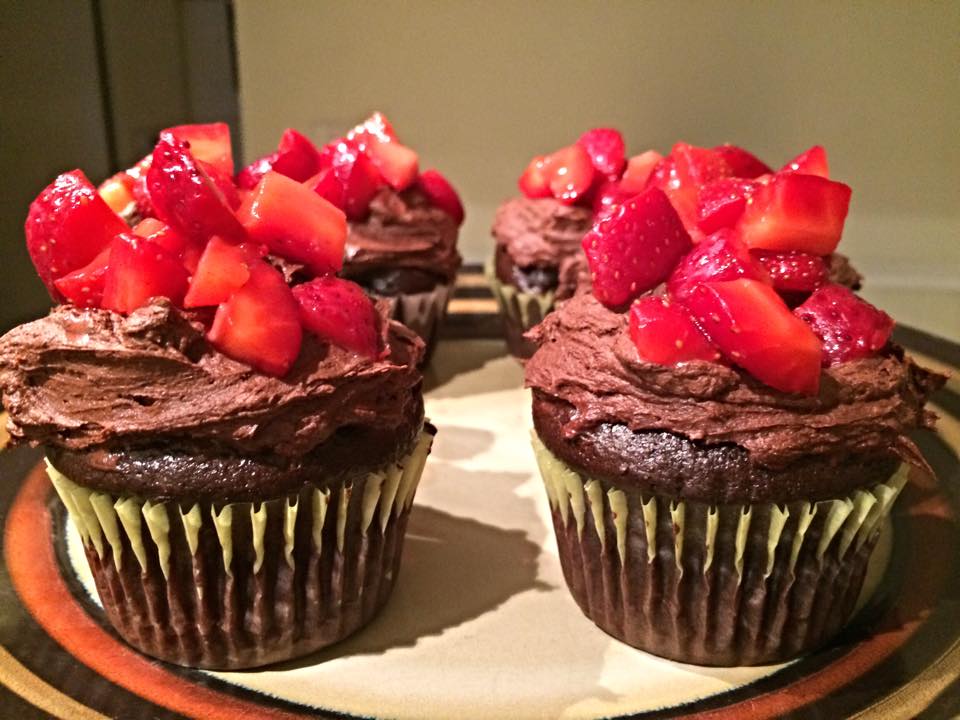
Is the Paleo Diet Right for You?
By Nicole Kurz | March 23, 2015
Want to become a better version of you?
Join our next Better You 30-day challenge!
Unless you really are a caveman, it’s a pretty safe bet you’ve heard of the Paleo Diet. In fact, in 2013 the Paleo Diet was the most Googled diet for the entire year, and in 2014 several of its spin off counterparts, including the Sugar Detox Diet and the Clean Eating diet also made the Top 10 List.
With over 80 million people just in the US alone who are obese, according to the Center for Disease Control, it’s refreshing that a clean, wholesome way of eating is gaining so much popularity. And while there might be more than a few skeptics out there, here at Fitness HQ we’ll give you the facts so that you can make up your own mind as to whether or not a Paleo approach to nutrition is right for you.
What is Paleo?
According to Robb Wolf, one of the worlds leading experts on Paleo and a huge proponent for the way of eating:
“The Paleo diet is the healthiest way you can eat because it is the ONLY nutritional approach that works with your genetics to help you stay lean, strong and energetic! Research in biology, biochemistry, Ophthalmology, Dermatology and many other disciplines indicate it is our modern diet, full of refined foods, trans fats and sugar, that is at the root of degenerative diseases such as obesity, cancer, diabetes, heart disease, Parkinson’s, Alzheimer’s, depression and infertility.”
The founder of the Paleo Diet, and renowned expert Loren Cordain Ph. D echoes these claims, and further adds that the hunter/gatherer approach to nutrition will optimize your health, reduce your risk of diseases and help you lost weight.
What’s more, Dr. Cordain has conducted and published hundreds of different research studies in numerous medical journals dating all the way back to the 1980’s proving the validity of the how the Paleo Diet supports his health claims.
How it Works
The premise of the diet is simple. Eat whole, complete, nutrient dense foods that your body can easily process and use as energy for better health.
In focusing on high protein, high fiber, high potassium foods and eliminated processed ingredients, chemicals, and things like wheat and diary that our bodies are ill equated to process we can keep our organs happy and our bodies functioning at their peak capacity.
What to Eat (and Not Eat)
While critics like to find fault with the “restrictive nature” of the Paleo Diet, the list of foods to include daily is long and plentiful, and those that are to be eliminated are as a direct result of research findings that indicate they are detrimental to our health.
If you’re someone who follows the Paleo Diet your plate will include:
Grass-produced meats
Fish/seafood
Fresh fruits and veggies
Eggs
Nuts and seeds
Healthful oils (Olive, walnut, flaxseed, macadamia, avocado, coconut)
According to the Paleo approach, you will want to avoid Foods Like:
Grains (wheat, rye, barley, etc.)
Legumes (including peanuts)
Dairy
Refined sugar
Potatoes
Corn
Processed foods
Salt
Refined vegetable oils
As a general rule of thumb, anything with an extensive “ingredients” list, or that includes additives, chemicals and compounds not found in nature should be eliminated.
Paleo for Athletes
The Paleo diet can be hugely beneficial for the general population, but athletes such as Crossfitters, bodybuilders and those doing serious endurance training will have some special considerations to keep in mind when eating Paleo.
In 2005 Dr. Cordain partnered with Joe Friel, an expert on training and nutrition for endurance athletes, and together they published The Paleo Diet for Athletes. It’s a very informative read, and included on our resource list below, but to sum it up simply for you here, athletes tend to need more carbohydrates than an average person, and the timing of when we ingest those carbs is important.
In this article on Training Peaks, they outline basic recommendations on what athletes to eat before, during, immediately after and for extended recovery. You’ll notice that while carbohydrates are included in the overall recommendations, this doesn’t mean bread, pasta or refined sugars. Even with theses expanded recommendations, the premise of eating whole, natural, healthy foods still stands.
With Paleo, things like fruit, sweet potatoes, raisins will make up for those extra calories and nutritional needs, giving your body the energy it needs to perform and recovery at maximum capacity.
Tasty Paleo Recipes
Probably one of the biggest arguments or hesitations I hear when someone is considering adopting a Paleo approach to what they eat is how sad they are about foods they will have to give up.
Luckily, with the popularity of the diet there are literally hundreds of creative cooks who have done all the hard work for us to discover ways to “Paleo-ify” some of your favorite treats or comfort foods.
Using your handy friend Google you can easily find delicious recipes for Paleo treats like chocolate chip cookies (using almond flour instead of regular flour), paleo mac and cheese, and even ice cream!
Some of our favorite Bloggers and recipe mavens include Juli over at PaleoOMG and Michelle over at NomNomPaleo, but when it comes to food inspiration there’s literally hundreds of recipes out there to choose from.
Don’t let the fear of having to give up a treat you absolutely can’t live without stop you from reaping the potential health benefits Paleo has to offer you. There’s probably a recipe out there you can use to create a Paleo friendly version that you may even like better than the original.
Resources
If you want more info on Paleo, there’s literally tons of places you can look. Some of our favorites are:

